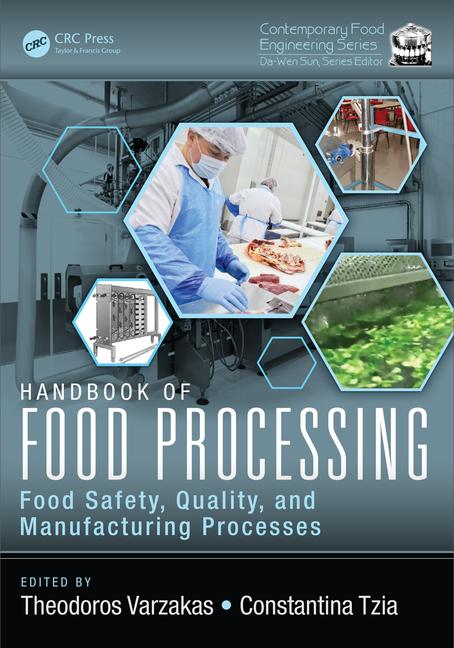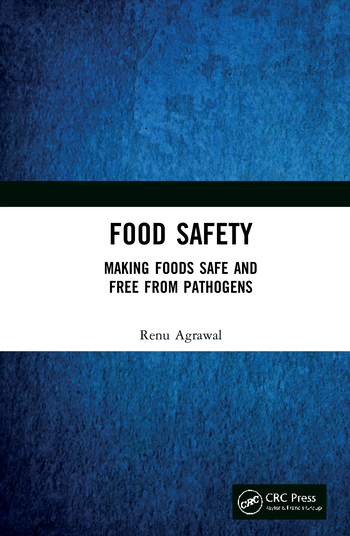Building Loyalty Through Safety: Enhancing Allergen Management Programs as a Strategic Business Opportunity
Food allergy acts as a crucial factor in how millions of consumers decide where and what to eat every day

Image credit: Wavebreakmedia/iStock/Getty Images Plus via Getty Images
Food allergies are driving consumer choice and loyalty in the Canadian foodservice sector. In fact, 80 percent of food-allergic consumers and 44 percent of people without food allergies say that allergen management policies influence their decisions when choosing a restaurant. These are among the findings from new research commissioned by Food Allergy Canada to understand how food allergies impact Canadians' dining-out choices and spending habits.
Food Allergy Canada's research report, "Recipe for Success: How Allergy-Aware Restaurants Drive Loyalty and Boost Their Bottom Line,"1 reveals key drivers of spending choices by people impacted by food allergy when dining out. It identifies untapped opportunities for foodservice businesses to grow their market share by addressing the concerns of this segment. Food safety leaders have a key role to play in this shift, leveraging their expertise to foster consumer trust and transform food-allergic customers into loyal patrons.
Making Food Allergen Management a Priority
Food allergy acts as a crucial factor in how millions of consumers decide where and what to eat every day. Accidental exposure to allergens can lead to severe reactions and, in rare cases, fatalities. Despite good intentions, many frontline staff lack adequate knowledge and guidance to manage these dietary requests effectively. Extensive research2 has shown that:
- There are significant gaps in foodservice staff knowledge, including the inability to identify major allergens, misconceptions about meal safety, and lack of confidence in how to identify a reaction or respond to an emergency.
- Miscommunication is often the root cause of both allergic reactions and fatalities.
- Digital advancements in food ordering are making it harder for guests to disclose their food allergies or identify safe food options.
- Inconsistent or lack of regulations leaves it up to operators to make judgment calls without a standardized resource to make informed, risk-based decisions.
Food allergen management programs and training are inconsistent and not widely available, especially among independent restaurants, highlighting both a critical need for action and an opportunity for industry collaboration.
There is no question that serving guests with food allergies can be challenging, especially when operators need to balance other day-to-day operational demands. However, by embedding food allergen management into an aspect of customer service rather than seeing it as a food safety requirement that involves "additional steps," foodservice operators have an opportunity to capture a greater share of an underserved market.
Meeting the Needs of Food-Allergic Consumers
Food Allergy Canada is working to better understand the value of serving those with food allergies. The latest research, which involved 1,500 consumers with and without food allergies, revealed that food-allergic consumers dine out as often and spend as much the general population, but they lack access to safe food choices. With millions of people impacted, there is a sizable market opportunity for the food sector to meet their needs.
The majority (96 percent) of food-allergic consumers dine out, dine in, or order food from restaurants at a frequency comparable to their non-food-allergic counterparts (98 percent) (Figure 1).
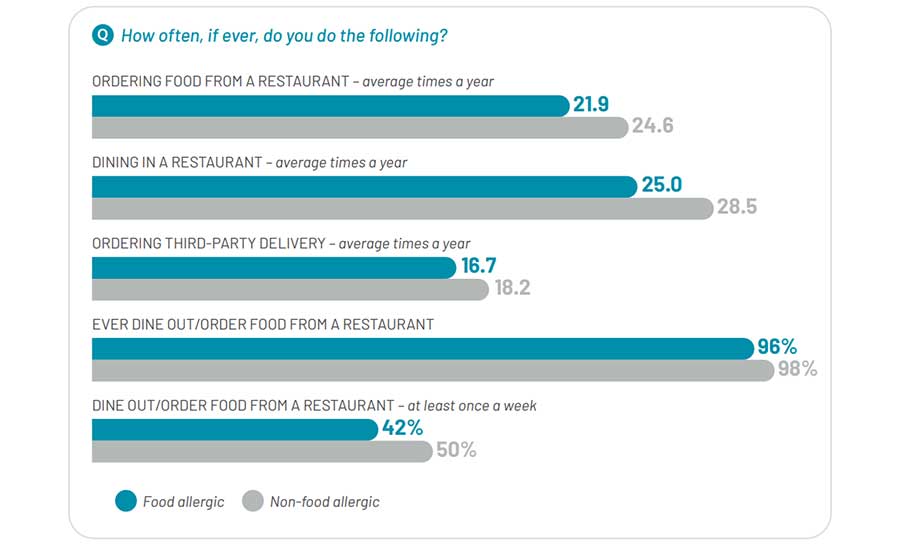
Food-allergic consumers hold similar spending estimates as their non-food-allergic counterparts, with an average spend of $38–$44 CAD per person when dining out or ordering food from a foodservice establishment (Figure 2).

A significant portion (37 percent) of consumers report feeling limited with safe food options, with hesitation to try new places, which limits their foodservice choices (Figure 3).
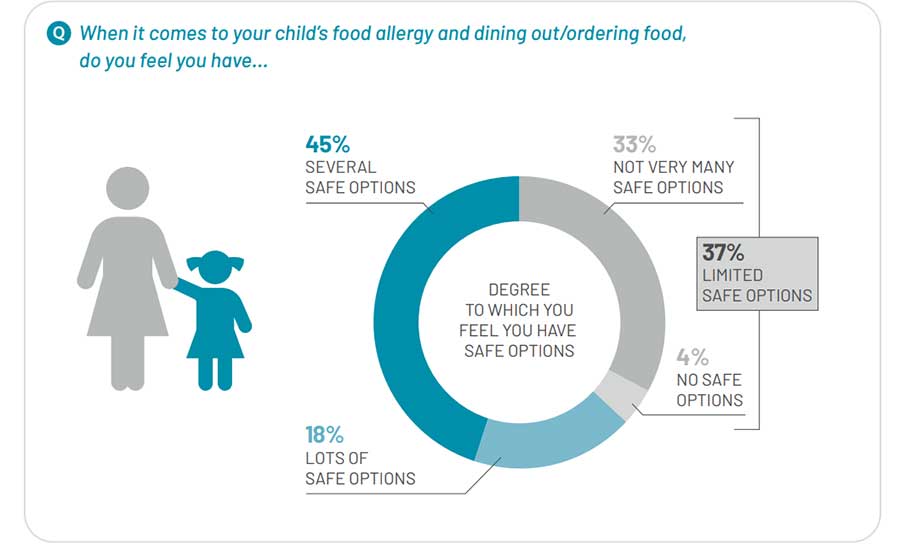
Food-allergic consumers are less focused on cost when dining out, prioritizing restaurants that offer safe food for their food allergy or have allergen management processes in place. When choosing where to dine out or order from, food-allergic consumers consider various factors beyond just taste and cost. More importance is placed on the restaurant's willingness to accommodate their allergy, order accuracy, consistency, and general safety practices (Figure 4).
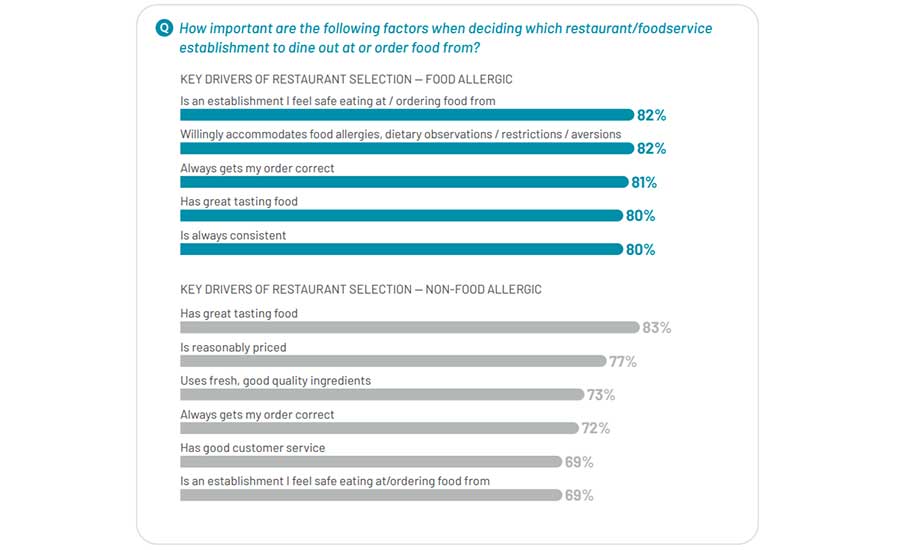
Allergen management practices significantly influence how often food-allergic consumers dine out, while among the non-food-allergic, expense is by far the number one concern (Figure 5).

Loyalty runs high among food-allergic consumers and their families, with food-allergic consumers displaying a much higher degree of restaurant loyalty to locations that accommodate their food allergy. Thirty-six percent of food-allergic consumers say that they are very loyal and typically always visit the same places. By contrast, only 17 percent of non-food-allergic consumers say the same (Figure 6).
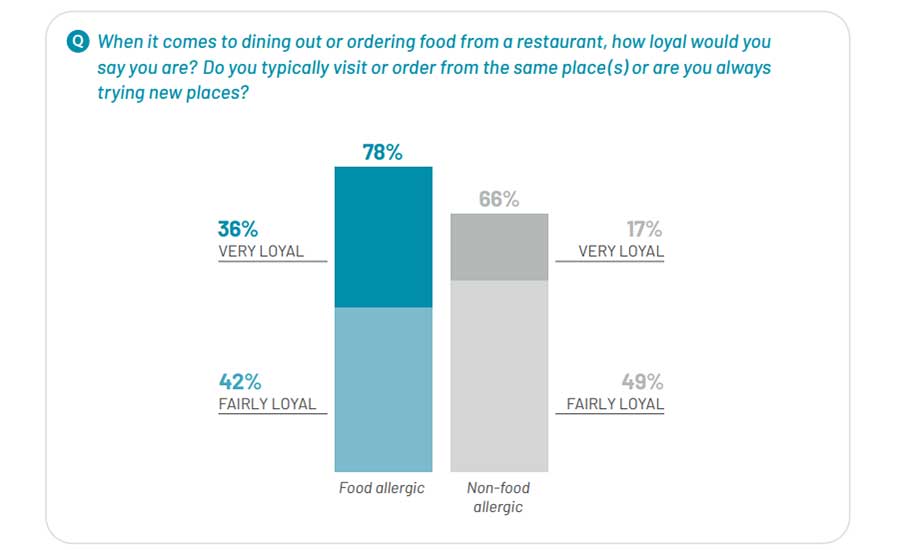
Fifty percent of food-allergic consumers indicate that their own or their child's food allergy significantly influences their level of restaurant loyalty. In fact, two-thirds of food-allergic consumers say they often or always choose specific restaurants because of their allergen policy or the availability of ingredient information for menu items (Figure 7).
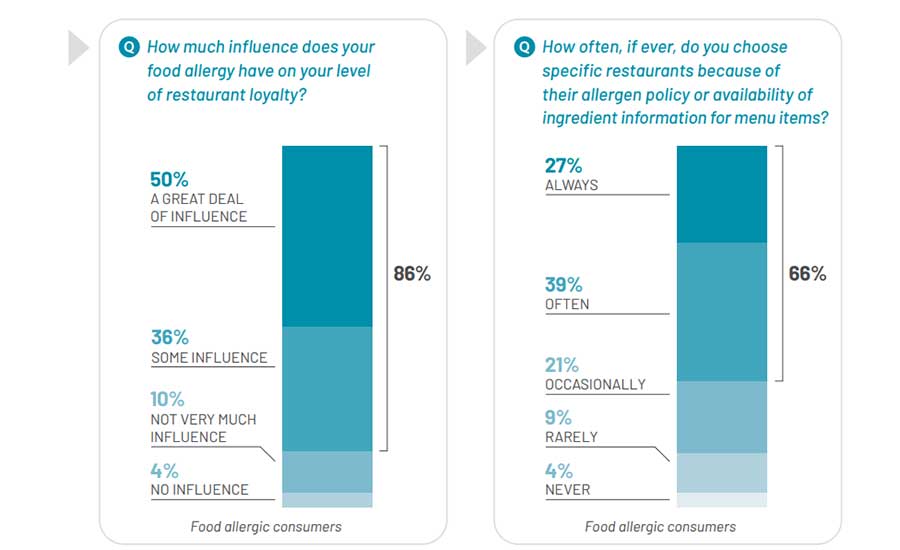
Food allergy influences the choice of restaurant, even for those that are not allergic, indicating there is a larger market opportunity at play. Food-allergic consumers prioritize restaurants that demonstrate a willingness to accommodate their condition and provide accurate ingredient information. However, nearly half of the non-food-allergic consumers (44 percent) also consider food allergy when selecting a restaurant when dining out with others, indicating a broader awareness on the seriousness of the condition and allergen-related concerns impacting a larger consumer base (Figure 8).
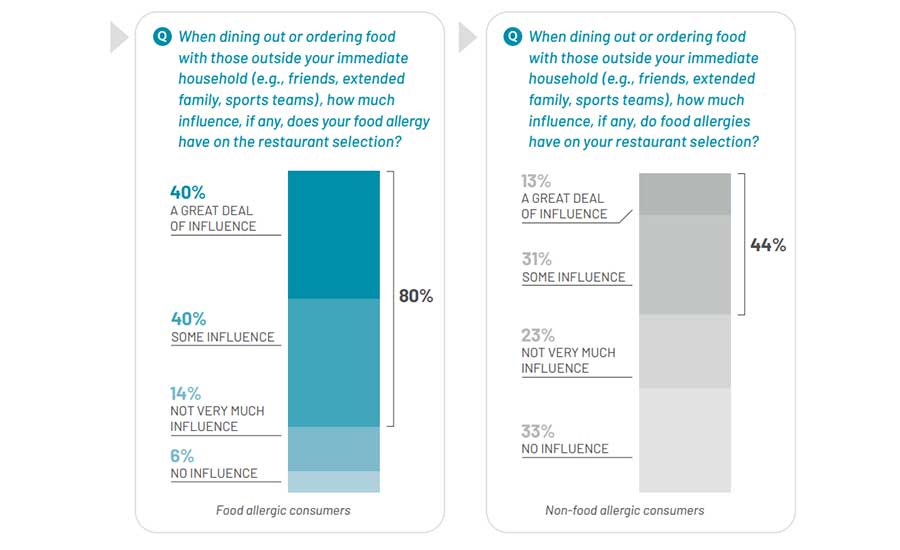
Safety is essential, and there is a need for improvement. Consumers with food allergy are at risk of reactions and/or have experienced reactions when eating out, indicating a need for change (Figure 9).
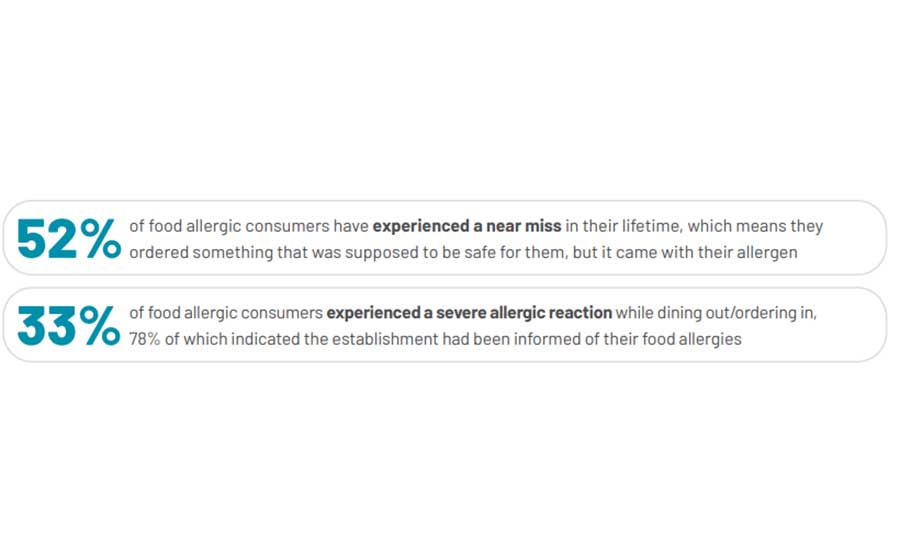
The findings from Food Allergy Canada's research highlight the immense potential for the foodservice industry to improve food allergy processes and capture a loyal customer base. For food safety professionals, this research makes a strong business case to enhance your organization's existing food allergen management programs and showcase a lucrative new opportunity to grow market share.
Turning Challenges Into Opportunities
Food safety professionals have a chance to leverage their technical expertise to highlight the business potential of effective food allergen management for their organization. Rather than viewing food allergy strictly through a regulatory or compliance lens, a business leader mindset can be adopted to present this concept as part of the overall guest experience and build loyalty, retaining future patrons. By presenting food allergen management as not only a food safety priority but also a business opportunity to attract and retain a devoted, underserved consumer base, the message becomes clear and relevant to other business leaders.
Food safety professionals can be the driving force behind this transformation toward both improved safety and boosting the bottom line. Using existing food safety expertise, leadership can be demonstrated to guide the enhancement of food allergen management practices.
An outline is provided below to help you get started:
- Build an Empowered and Knowledgeable Workforce. Effective training programs on food allergy set the foundation for success for workers on the frontline. Many employees recognize the importance of providing safe food to food-allergic consumers, but often lack the necessary resources or background knowledge to do this effectively. Unlike generic food safety training in food handling and hygiene practices, food allergy training is less common. Training staff in effective communication about food allergies is essential in foodservice operations. Unlike other food safety topics, management of food allergy requires precise communication, from ordering to delivery, to avoid incidents. This training on communication is essential to all staff and ensures that everyone is equipped with the necessary knowledge to handle food allergies safely. Providing quick, yet effective allergen training to staff will empower knowledge, but may also enhance employee engagement by helping them understand how the work they are doing is a part of the bigger picture. Training should be tailored to each role, built into onboarding programs, and be regularly reinforced based on the organization's operational processes and needs.
- Effective Communication is Fundamental From Ordering Through to Delivery. Generating a welcoming environment for guests with food allergies hinges on staff being effective communicators. The first step is welcoming allergen disclosure. Staff, signage statements, and ordering platforms should be encouraged to ask guests about any allergies, which show a willingness to accommodate their needs. Fostering open communication will enable guests to feel valued and understood. Checking ingredients is also a critical control step, ensuring that no assumptions are made, and guiding the guest toward a safe alternative meal option in the event of uncertainty. Preparing food safely is always a must, with a key focus on the needed safe food handling protocols to prevent cross-contact Finally, delivering the right meal the right way requires best practices to ensure that the meal was prepared accordingly before reaching the guest. Training staff on all key steps of communication, identifying potential breakdowns in the process, and implementing controls to prevent errors not only creates a safer dining experience, but also builds trust and loyalty among food-allergic guests and frontline staff.
- Leverage Technology for Food Allergen Solutions vs. Barriers. Exponential uptake in the digital guest experience offers a potential solution to provide accurate ingredient information to guests. Yet, more often, it acts as a barrier to providing consumers with essential information needed to select a safe meal. Technology should enhance, not hinder, the ordering process by providing clear and accurate ingredient information to guests with food allergy. Food businesses should be mindful in ensuring that digital platforms are inclusive and provide the same conveniences for all patrons through accessible ingredient information and disclosure mechanisms. By doing so, consumers can make informed decisions about safe food choices. Businesses need to ensure they have the controls in place to receive these orders with the appropriate level of attention, preparing and delivering meals exactly as requested. This involves ensuring food allergy notes are not captured in the same special instruction box as a low- or no-risk request, such as extra condiments, and that platforms are set up to flag these orders. Embracing technology to facilitate open communication and transparency will help transform the online foodservice landscape, ensuring that food-allergic guests can trust and rely on digital platforms for safe dining experiences.
Call to Action
Organizations have an opportunity to change the dining experiences for food-allergic consumers from a source of fear and anxiety to one of trust and enjoyment. For food safety professionals, it is an opportunity to lead the charge in operational excellence and optimize their current food allergen management programs. Collaboration within the industry is key to standardizing and creating confidence in the process to serve food-allergic guests. Food Allergy Canada has worked in collaboration with foodservice leaders to develop Think Food Allergy,3 a program offering fast, easy, free tools and resources to foodservice operators, with a focus on improving food allergen management in Canada.
By embracing the power of trust and prioritizing food allergen management, foodservice businesses can convert a safety necessity into a strategic advantage, fostering consumer loyalty and driving business innovation and growth.
References
- Food Allergy Canada. "Recipe for Success: How Allergy-Aware Restaurants Drive Loyalty and Boost Their Bottom Line." 2024. https://foodallergycanada.ca/wp-content/uploads/Recipe-for-Success-Consumer-Experience-Report.pdf.
- Dominguez, S., J. Théolier, J. Gerdts, and S.B. Godefroy. “Dining out with food allergies: Two decades of evidence calling for enhanced consumer protection.” International Journal of Hospitality Management 122 (September 2024): 103825. https://www.sciencedirect.com/science/article/pii/S0278431924001373.
- Food Allergy Canada. “Think Food Allergy: Foodservice Tools and Resources.” 2024. https://foodallergycanada.ca/professional-resources/foodservice/foodservice/think-food-allergy-tools-and-resources-for-foodservice/#registerfoodservice.
Kate Reid is the Director of Food Service for Food Allergy Canada, a nonprofit organization dedicated to helping Canadians with food allergy live with confidence. She holds a bachelor’s degree from Brock University in Honours of Public Health, and has worked in the foodservice industry for over 10 years in the field of risk management. Her background is operational excellence in both food safety and health and safety, specializing in developing actionable measures to drive improved safety and business results.
Looking for a reprint of this article?
From high-res PDFs to custom plaques, order your copy today!







